PETA Exposés in Retrospect: How Public USDA Information Proved Invaluable
Earlier this month, animal-welfare records were removed from the U.S. Department of Agriculture (USDA) website. Included in the documents were inspection reports and records of commercial animal facilities, many of which had violated animal-welfare laws and regulations. The USDA has since attempted to get away with reposting only a tiny fraction of the records that it deleted, but PETA and the other plaintiffs in the pending lawsuit against the agency are not fooled or satisfied by this.
PETA regularly uses the documentation published in the USDA’s Animal Care Information System (ACIS) to identify animal-welfare violations and spotlight animal abusers. This information has proved vital for animal rights organizations and the public alike. With help from the ACIS, PETA has publicized infractions by commercial operations such as circuses, zoos, puppy mills, and laboratories that test on animals. To illustrate just how invaluable this information is, we looked back at some of the most momentous of these exposés over the years:
1. Shin Nippon Biomedical Laboratories
Whistleblowers provided PETA with video footage and other evidence showing numerous animal-welfare violations that occurred at Shin Nippon Biomedical Laboratories (SNBL). However, it was clear from the USDA’s online records—which noted minimal violations—that the department was not properly enforcing the federal Animal Welfare Act (AWA). After PETA filed several complaints and submitted much evidence, the USDA investigated and filed an administrative lawsuit against SNBL declaring that the laboratory had committed multiple violations of the AWA between 2011 and 2016 that had led to the prolonged and painful death of dozens of monkeys. SNBL had to pay $185,000 in penalties.
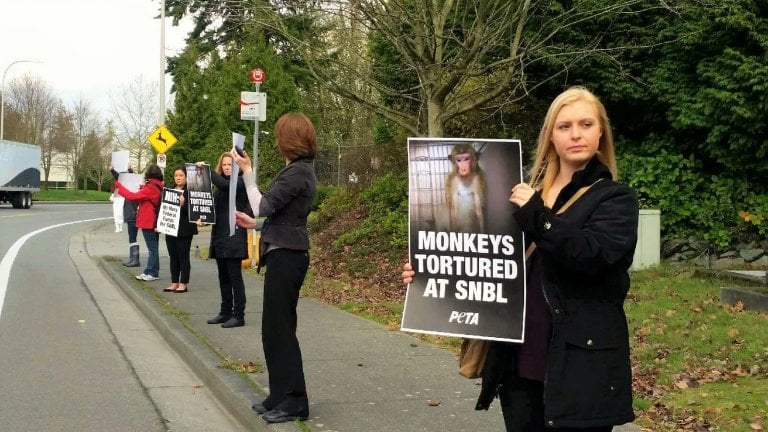
2. Carson & Barnes Circus
In January 2015, the USDA cited notorious animal abuser Carson & Barnes Circus for failing to identify, convey, or document treatment of veterinary problems for several animals, including Nina the elephant, who lost 500 pounds over the course of just a few months. When she died shortly thereafter, PETA urged the department to investigate her death.
In May 2015—after we went public with the information about the citation and called for an investigation into her death—the USDA pulled and revised its January 2015 inspection report to remove some of the information that detailed just how bad her condition really was.
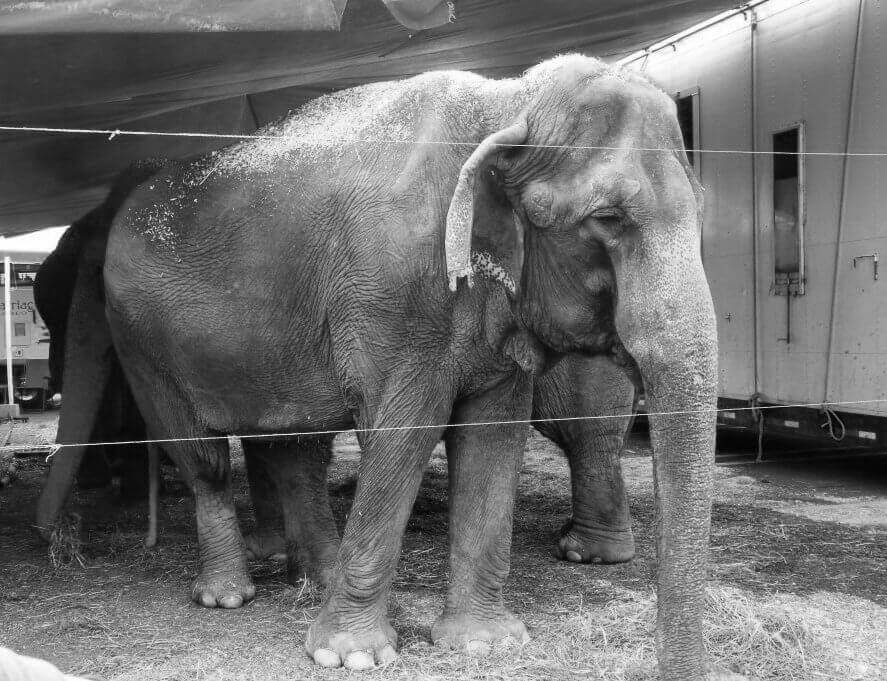
3. Bristol-Myers Squibb
In 2012, a USDA inspection report substantiated information that a whistleblower had given to PETA about a monkey who had died in a cage washer at Bristol-Myers Squibb’s laboratory in Pennington, New Jersey. The whistleblower also informed us that another monkey had strangled to death after she was secured to the front of her cage—apparently by some sort of leash—and then left unattended. PETA filed a complaint and publicized the strangulation. The USDA subsequently found the claim accurate and cited Bristol-Myers Squibb for violating the AWA.

4. The Mobile Zoo
In 2015, the USDA filed an official complaint against The Mobile Zoo, a roadside zoo in Alabama, because of years of animal-welfare violations. Joe—a solitary chimpanzee who had been held in captivity since the day he was born—was confined to a horse stall and a virtually barren enclosure no larger than a dog run on a packed-dirt floor behind double layers of chain-link fence. The roadside zoo even encouraged visitors to throw peanuts at him.
After the USDA filed its complaint—and after the U.S. Fish & Wildlife Service (USFWS) announced that it was eliminating a loophole that excluded captive chimpanzees from the protections of the Endangered Species Act (ESA)—PETA and two concerned citizens filed an ESA lawsuit against The Mobile Zoo and its director, John Hightower. They agreed to do the right thing for Joe by relinquishing him to Save the Chimps, an accredited sanctuary. Today, he’s thriving, spending his days roaming a sunny, multi-acre island in Florida as part of a large social group of chimpanzees.
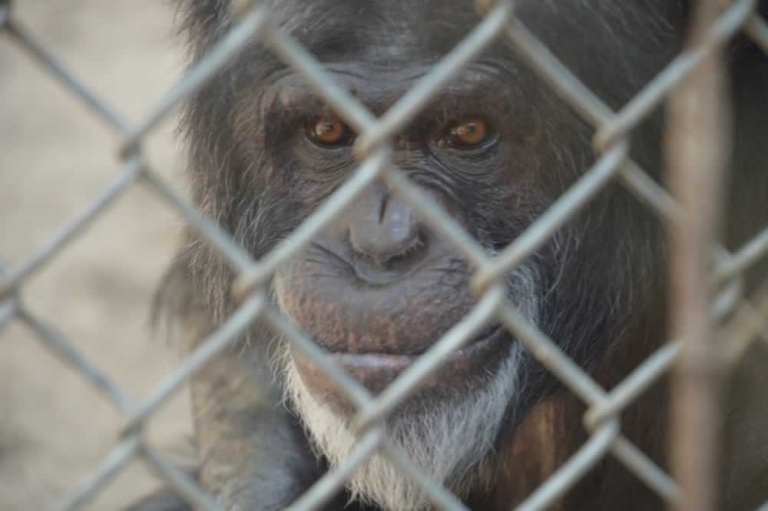
5. Professional Laboratory and Research Services, Inc.
For years, USDA records had indicated that no serious issues or violations were occurring at Professional Laboratory and Research Services. However, PETA conducted an eyewitness investigation, which exposed horrendous cruelty to animals inside the North Carolina laboratory. We filed a complaint with the USDA, which finally led the agency to take action by citing it for dozens of violations of federal animal-welfare regulations. Just a week later, the animal-testing facility surrendered nearly 200 dogs and more than 50 cats and shut its doors.
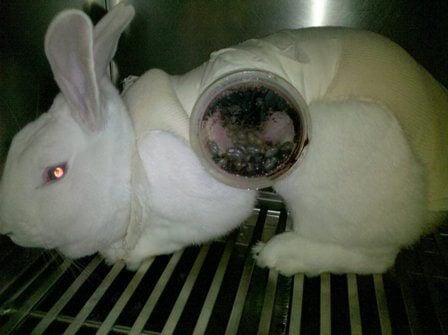
6. Three Bears General Store
In 2014, after learning that the owner of the Three Bears General Store in Tennessee was holding two bears at a second location—which turned out to be in a decrepit backyard cage—PETA submitted a complaint to the Tennessee Wildlife Resources Agency, which then investigated and charged the owner with illegally importing the bears into the state. We rescued the two Himalayan black bears, who were transported to The Wild Animal Sanctuary in Keenesburg, Colorado, where they now have acres of natural terrain on which to roam. After analyzing the results of the state investigation, PETA discovered that Three Bears’ owner had also apparently forged USDA documents relating to the illegal transfer. We shared this information with the agency, which opened an investigation into the matter.
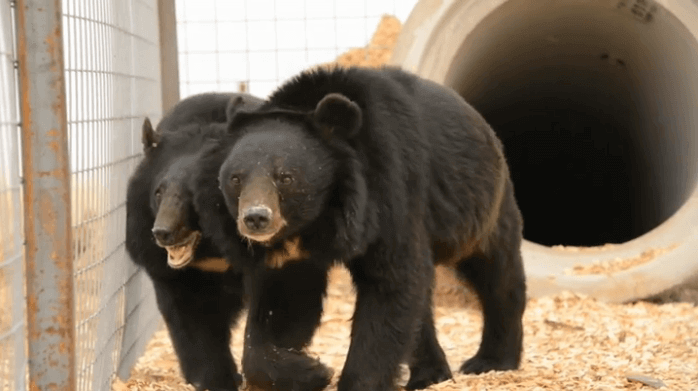
7. University of Wisconsin–Madison
In 2012, after seeing online inspection reports and other information about the use of cats at the University of Wisconsin–Madison (UW-Madison), PETA sued the school under open records laws in order to obtain photographs of dozens of cats who had been imprisoned, cut open, and killed in cruel “sound localization” experiments. PETA exposed the experiments and filed a complaint with the USDA—which had not previously noted any serious problems. Prompted by us, the agency inspected the UW-Madison laboratory and confirmed that there was “a pattern of recurring infections” and that all cats profiled by PETA in its complaint had been “diagnosed with chronic infections.” The USDA noted that some of them had died from the infections and that the eye of one named NJ had to be removed after an implanted metal coil caused a severe infection. As a result of this investigation, the agency also cited and fined UW-Madison for violating the AWA, because a cat named Broc had been burned so badly with a heating pad that she required surgery.
In response to PETA complaints, a separate report by the National Institutes of Health found that UW-Madison had not taken proper steps to prevent the infections in the cats’ festering open head wounds or provide treatment for them and that the university’s justifications for using cats as well as the number of cats used were inadequate. The agency took the extraordinary step of ordering the laboratory to halt all invasive experiments for six months and implement major reforms.
Less than two years after PETA’s campaign to expose and end the cruel experiments on cats at UW-Madison, the embattled laboratory closed its doors and adopted out the remaining cats to good homes.
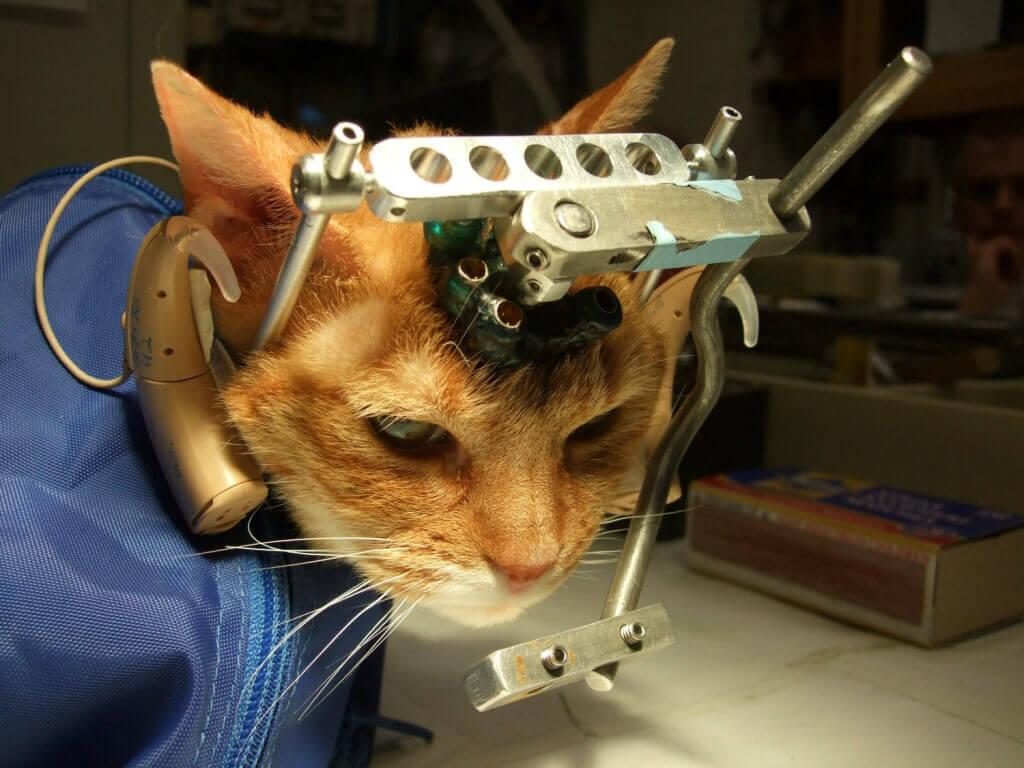
8. The Farm at Walnut Creek and Lazy 5 Ranch
The Farm at Walnut Creek and Lazy 5 Ranch—roadside zoos in Ohio and North Carolina, respectively—have racked up numerous violations of the AWA. At the farm, animals were castrated by employees without veterinary guidance, were forced to drink water teeming with algae and larvae, and endured injuries and illnesses that went untreated. Meanwhile, the ranch repeatedly neglected giraffes’ overgrown hooves, making it painful and difficult for them to walk.
USDA inspection reports also revealed that these roadside zoos, both owned by Henry Hampton, used the drug succinylcholine to paralyze animals—who remained fully sensitive to pain—for procedures. PETA seized on this information to call for cruelty-to-animals investigations of both facilities. We also submitted a complaint to the Ohio Veterinary Medical Licensing Board urging it to investigate The Farm at Walnut Creek’s veterinarian for the apparent unlawful authorization and use of this drug as well as cruelty to animals. We’re currently awaiting responses from authorities.
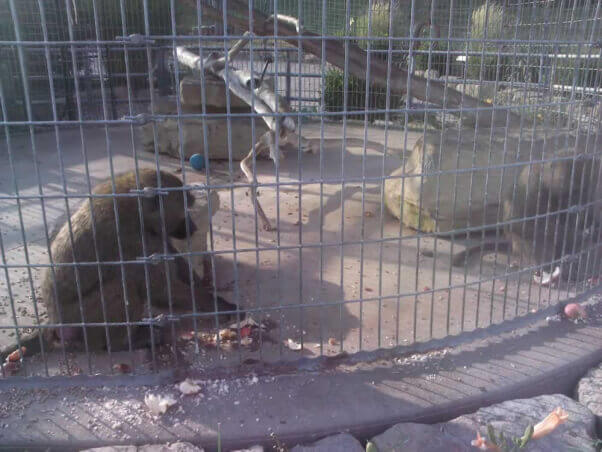
9. Deer Haven Mini Zoo
Lily the bear lived in a cramped, barren, and squalid corn crib at Deer Haven Mini Zoo in Maryland, after being transferred from the notorious Natural Bridge Zoo in Virginia as a cub. The USDA repeatedly signed off on the conditions of the dismal roadside zoo, but PETA obtained its own documentation of the conditions. Then we submitted a complaint to the agency about Lily’s conditions, including references to a USDA inspection report that had been published following a previous PETA complaint, in which one of the agency’s inspectors cited a different roadside zoo for confining a bear to inadequate space. Following a subsequent USDA inspection, the department issued a similar citation to Deer Haven.
Last year, after being barraged with phone calls from concerned PETA supporters, Deer Haven agreed to retire Lily to The Wild Animal Sanctuary, where she’s now hibernating for the first time in her life.
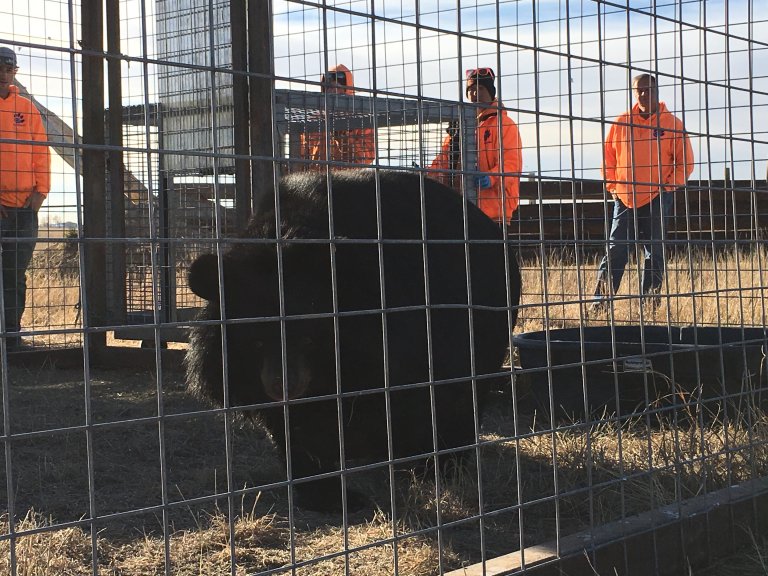
10. Mitchel Kalmanson
In June 2015, PETA submitted formal comments to the USFWS in opposition to an application from big-cat exhibitor Mitchel Kalmanson, based in Florida, who sought an ESA permit to import six endangered tigers from Mexico in order to use them in circuses—even though a ban on using exotic animals in circuses was set to go into effect on July 8, 2015. PETA’s submission to the USFWS relied heavily on details from USDA inspections and enforcement actions filed against Kalmanson a few months prior.
He was abusing tigers even as the USFWS considered his application. Ultimately, the agency sided with PETA and denied the application—and the tigers were spared further abuse at his hands.

11. Solitary Chimpanzees
Four years ago, PETA set a goal of getting all single, solitary chimpanzees from roadside zoos and entertainment outfits into accredited sanctuaries. Thanks to the ACIS, we quickly identified which animal exhibitors across the country had only one chimpanzee. The list included animals who weren’t otherwise on our radar screen—including Lisa Marie, a young female chimpanzee who was confined to a small cage in the basement of a residential home in Chicago and occasionally used in a traveling show. Today, seven formerly solitary chimpanzees, including her, are living in social groups at the Save the Chimps sanctuary, thanks to these efforts.
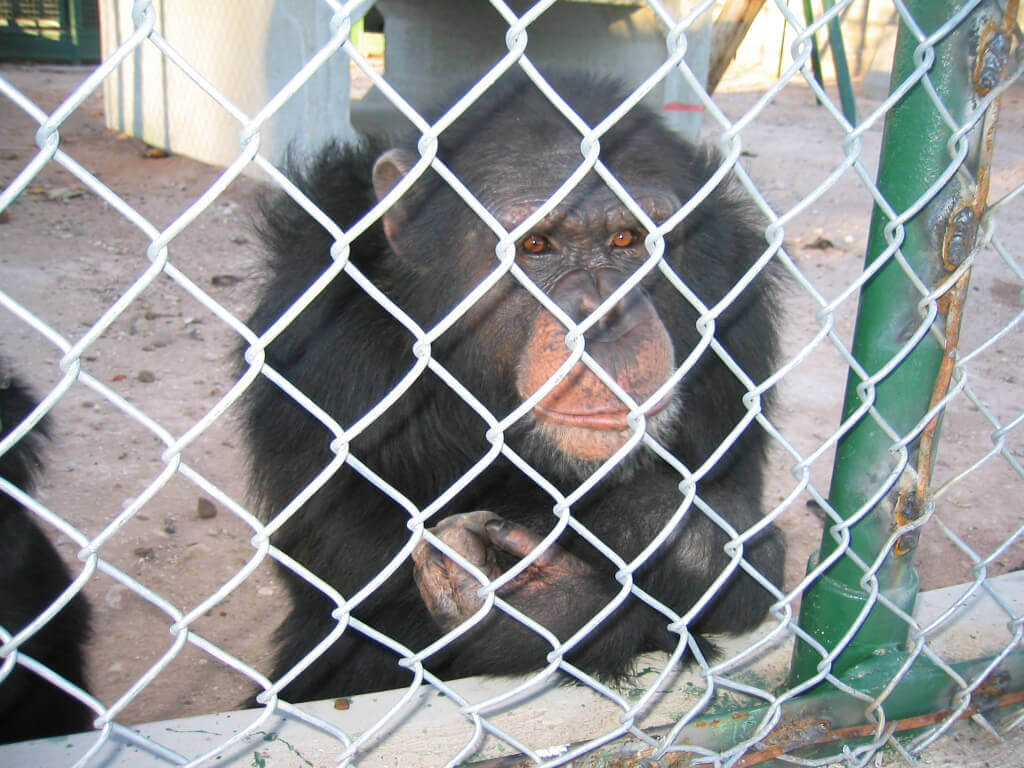
*****
As these examples demonstrate, the formerly public information included in the USDA database has been invaluable. It has helped PETA uncover numerous instances of cruelty to animals and publicize the risks and welfare records of particularly egregious exhibitors—some of whom the agency has since put out of business.
What You Can Do
Join PETA and take action by writing to your members of Congress. Use your voice to urge your representatives to end the secrecy currently surrounding violations of the laws and regulations that protect animals. Never be silent—speak up for animals now!

